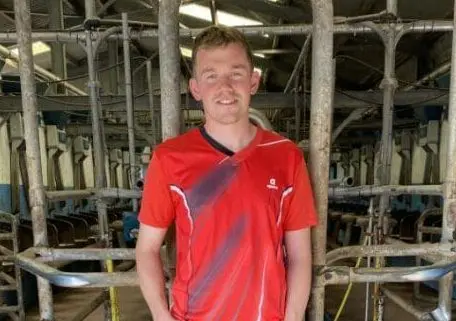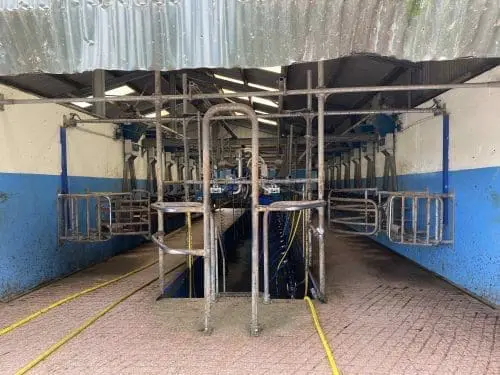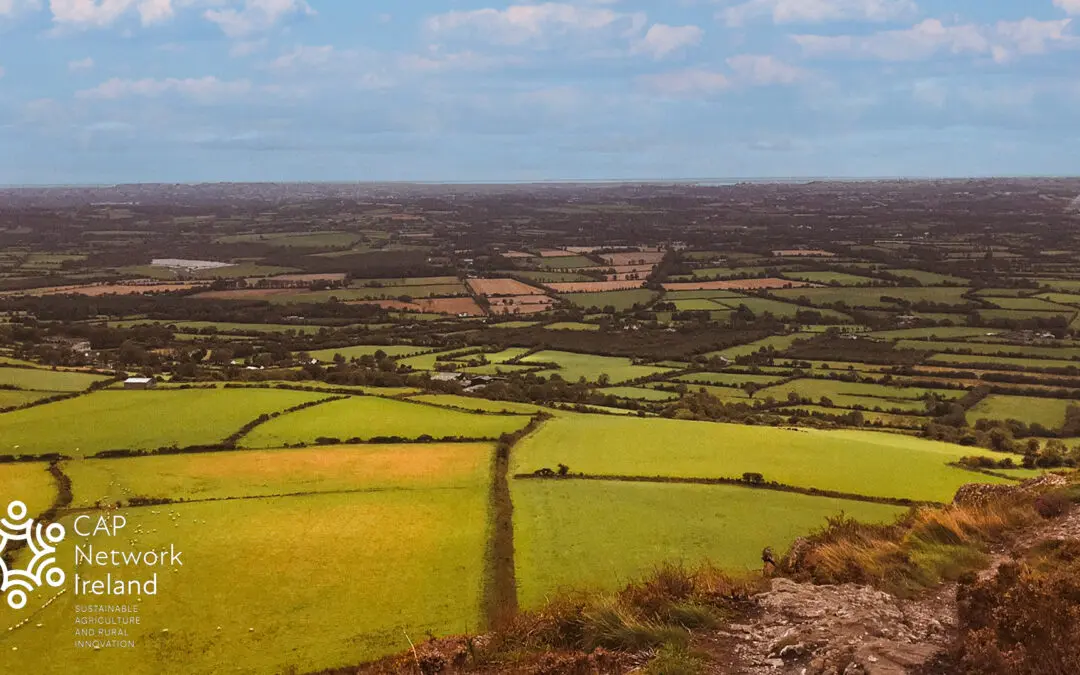Jack Kearney always wanted to be a dairy farmer and came straight home after agricultural college in 2015 to start farming in partnership with his father Larry and mother Annette just outside Rathcormac in Co. Cork. They have invested heavily in expanding their herd and infrastructure by extensively using the Targeted Agricultural Modernisation Scheme (TAMS) to create the state-of-the-art facilities that they have today.
Jack is constantly striving to learn new skills and is currently a Signposts monitor farmer and participates in several discussion groups. He is increasingly using Low Emission Slurry Spreading (LESS) equipment and multi-species/clover swards to reduce fertiliser costs and improve the financial and environmental sustainability of the farm. Earlier this year Jack was announced as Young Dairy Farmer of the Year 2023 at the National Dairy Awards.
During the milk quota era, the farm had been limited to milking 68 cows and rearing beef stock, although they had been gradually moving away from beef to focus on dairy breeding stock instead. Jack and his parents saw the end of quotas and the launch of TAMS funding as the perfect opportunity to expand the dairy herd significantly. Eight years later, the herd is now at 160 cows, a number that the farm can comfortably sustain on a spring calving, grass-based system.
A modern milking parlour has been built, high quality cow accommodation and slurry storage has been increased, an underpass has been built under the nearby road and now Low Emission Slurry Spreading (LESS) equipment is being used as an essential tool in growing grass cheaply and sustainably. Between the investment in the vacuum tanker and the extra slurry storage, Jack is now in a great position to get the full use out of his slurry as a nutrient for growing grass. “We capture every bit of water in the yard so we can use it to dilute the slurry. We can afford to hold onto the slurry longer into the grass growing part of the year and it has definitely reduced our use of chemical fertiliser. We had a damp July, so we were able to halve the amount of fertiliser on the ryegrass ground and we didn’t spread any fertiliser on the clover ground. We only spread a third of what we would normally spread in July. That’s a big saving.â€
Jack is humble and self-effacing about winning the Young Dairy Farmer 2023 award, but it is easy to see why he was selected. His attitude to financial and environmental sustainability while being open to outside advice and ideas is impressive. His business decisions also never lose sight of the importance of having a sustainable work/life balance. He is currently applying under TAMS3 to invest in heat detection collars and automatic drafting facilities. “This is a labour decision that will allow us to bring in relief milkers and not have to rely on them to draft cows for AI because, to be honest, some relief milkers are not knowledgeable enough to do it. So, TAMS3 funding will enable us to take a little break from the farm after the springtime.â€
After nearly a decade of hard work and strong planning, the Kearney farm is now a great example for the whole industry for how an intensive family-owned dairy farm can be both financially and environmentally sustainable while providing a good quality of life.





